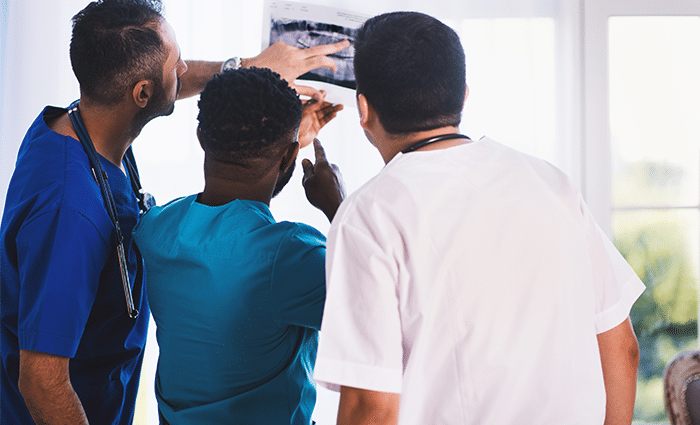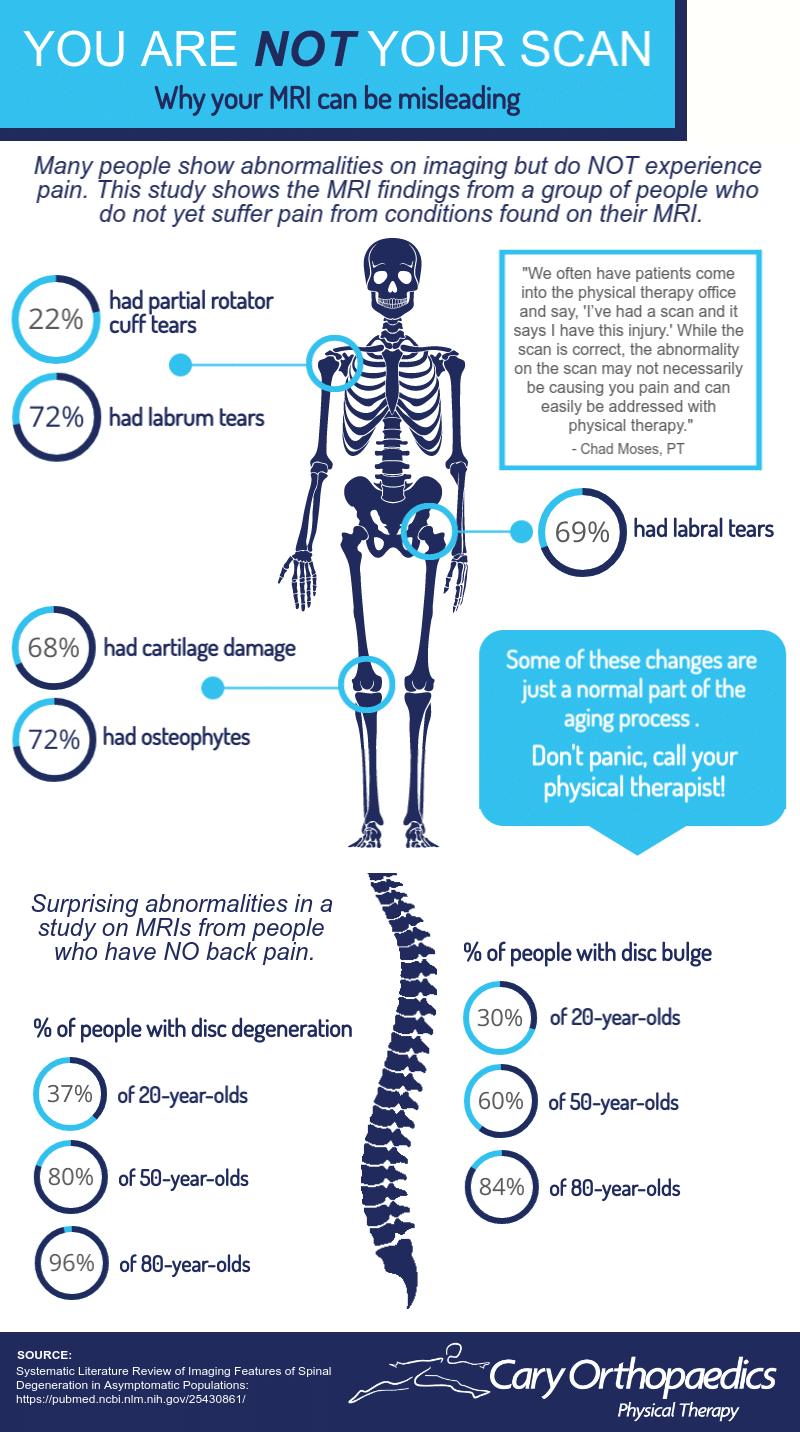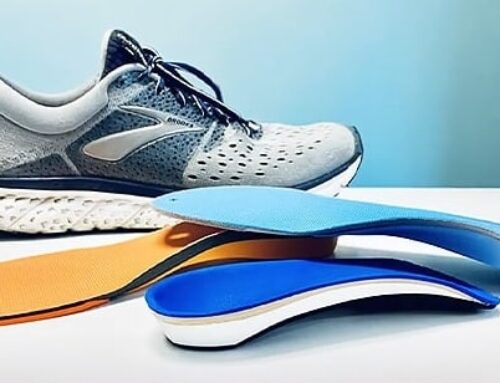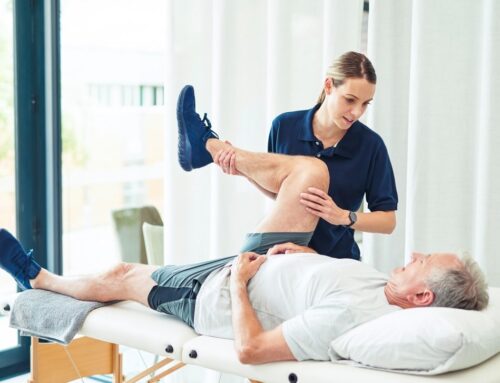Cary Orthopaedics physical therapist, Chad Moses, PT, Cert. DN/SMT, GTS, CKTP, Dip. Osteopractic, explains how the amount of pain you have does not always correlate to the amount of damage you may see on an MRI.
MRIs, CTs, ultrasounds and X-rays are medical assessment tools that orthopaedists, physical therapists and other health practitioners use to assist in diagnosing a patient’s pain. They are useful tools to determine whether more invasive treatments, such as injections and surgery, are warranted. It’s important to understand these scans are pictures of inside your body followed by a report from your provider about anything that looks abnormal about that picture.
Our bodies are just like machines, they show signs of wear as we age. Just like the outside of your body shows signs of aging, such as wrinkles and grey hairs, the inside of your body is no different. While degenerative changes can be accompanied by pain, that is not always the case. Sometimes bone and joint degeneration occurs without pain or discomfort. This is where physical therapy comes in – to help avoid further degeneration and future pain.
We often have patients come into the clinic and say, “I’ve had this scan, and it says I have this injury.” Although the scan is correct, the abnormality on the scan may not necessarily be causing pain and can be easily addressed with physical therapy.
A high percentage of the population has abnormalities on imaging but does NOT experience pain.
On a personal note, I had a traumatic injury to my right knee nine years ago. I was snowboarding in Vail and collided with a tree. Yes, “the tree always wins.” This resulted in several fractures of my lower leg, ligament and cartilage tears. I had surgery that night, then came home several days later, to start my rehab. Similar to what they say about mechanics having the worst running cars, I admit I wasn’t the best PT to myself. However, I eventually got serious and pushed through six months of rehab. Unfortunately, I re-tore my right meniscus nine months later and had a second knee surgery.
The point of this story is that a current MRI of my right knee today would show a partially torn ACL, torn meniscus and significant osteoarthritis of my lateral compartment. The reality is, I have minimal symptoms, run 25 miles every week, lift weights six days a week, and yes, I still snowboard every winter. I am not my scan.
MRIs and other scans are amazing tools; however, they should never replace a thorough examination and assessment performed by a qualified health practitioner. Our team of orthopaedic physicians and physical therapists at Cary Orthopaedics are valuable resources to educate you on the meaning of your MRI, and equally as important, what your scan doesn’t mean. We take the time to evaluate your symptoms, observe your movements and figure out the root cause of your pain. We then develop a treatment plan to improve your ability to move, reduce or manage pain, restore function and prevent further disability.
Through prescribed exercises, hands-on care and patient education, Cary Orthopaedics will help you get back to enjoying your life. Contact us to make an appointment.







